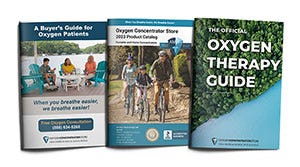SARS: Symptoms, Causes and Treatment
In 2003, SARS first appeared. SARS stands for Severe Acute Respiratory Syndrome, and is caused by a coronavirus. The first cases appeared in Asia in 2003, but spread to many other countries before containment of the disease. Although no known cases of SARS have appeared since 2004, the Centers for Disease Control, or CDC, consider SARS to be a select agent, which is any bacterium, virus, or toxin potentially capable of causing widespread harm to public health and safety.
The first symptom of SARS is usually a fever of greater than 100.4°F. Other symptoms may appear after that, including:
- Headache
- Chills and shaking
- Overall discomfort
- Body aches
- Diarrhea in some cases
- Respiratory symptoms, including a dry cough
- Breathing difficulties
- Pneumonia
- Dizziness
- Nausea and vomiting
In order for infection to occur, those droplets must get into the mucus membranes of the nose, mouth, or eyes. This means kissing, plus sharing food and drinks may lead to SARS infection. Additionally, if an individual touches a contaminated surface and then touches their eyes, nose, or mouth, they may contract the virus.
Diagnosing SARS requires evaluation of several important factors. Physicians use stethoscopes to detect abnormal sounds in the lungs. Various blood tests not only monitor several factors important in assessing a patient’s conditions. Additionally, there are SARS antibody tests to indicate presence of the disease. However, not all tests identify SARS in its early stages, and catching the disease early is vitally important. Chest X-rays or CT will indicate if pneumonia is present, which is quite common in SARS.
Another important factor in diagnosing SARS is finding out if the patient, or someone close to them, was recently in a region where SARS outbreaks occurred previously, specifically, China, Hong Kong, or Taiwan). The SARS incubation period is usually two to seven days, according to the CDC, although some cases it may last 10, or even 14 days. A person with SARS is generally considered contagious only when there are active symptoms.
Treating this illness first involves isolating any individuals with suspected cases of SARS, due to its highly contagious nature. Once in isolation, SARS patients usually receive:
- Antibiotics to combat pneumonia-causing bacteria
- Antiviral medications
- Steroids
- Oxygen and breathing support
- Chest therapy
The information on this page is not intended to be a substitute for professional medical advice, diagnosis, or treatment. For more information about SARS (severe acute respiratory syndrome), talk to your doctor or primary care provider.
Page last updated: August 1, 2023
Sources
- American Lung Association: RSV Symptoms and Diagnosis
- Centers for Disease Control and Prevention: Severe Acute Respiratory Syndrome (SARS)
- Centers for Disease Control and Prevention: SARS Basics Fact Sheet

